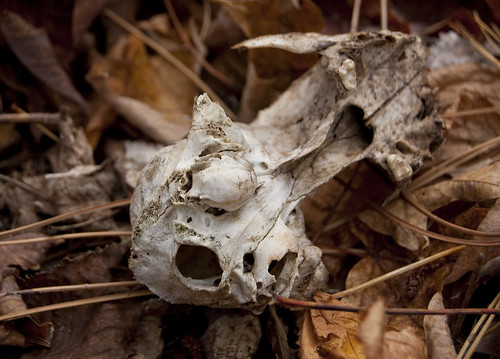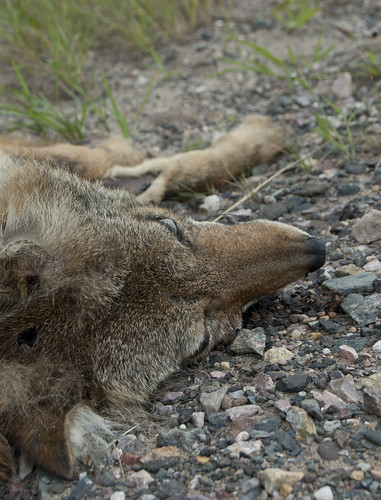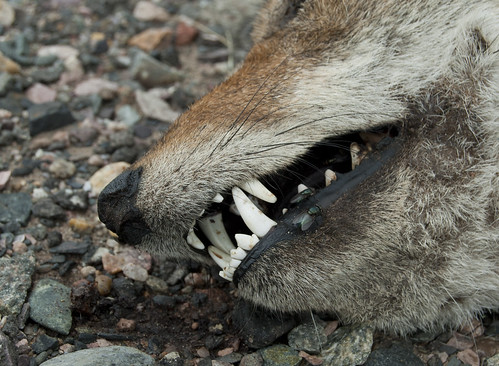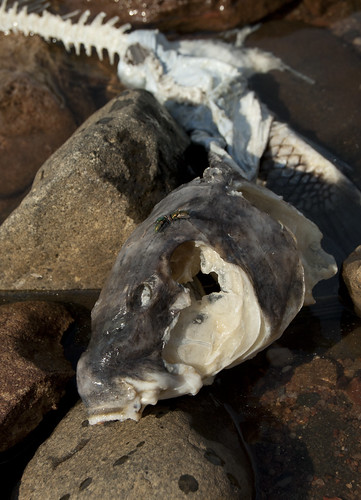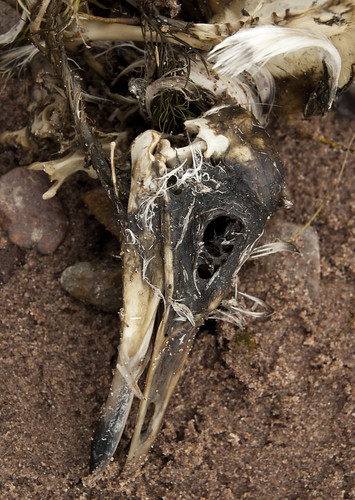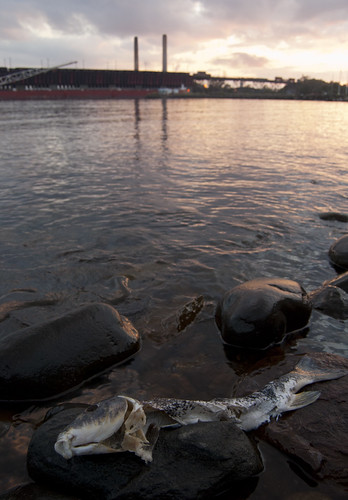I haven't seen too much in the way of wildlife -- dead or alive -- besides birds. Steph and I installed a few birdfeeders on our porch, and they have been frequented by a wide variety of species. Then there are, of course, the fox squirrels, which are numerous in the neighborhoods; they are everywhere and possess an uncanny ability to not be hit by cars.
To date, I have photographed only one dead animal since our move, and it was a juvenile house sparrow. I discovered it in the parking lot of our apartment complex; it hadn't been there for long, but it was resting in such a way that it looked like the body had, at one point, been run over by a bicycle or car.
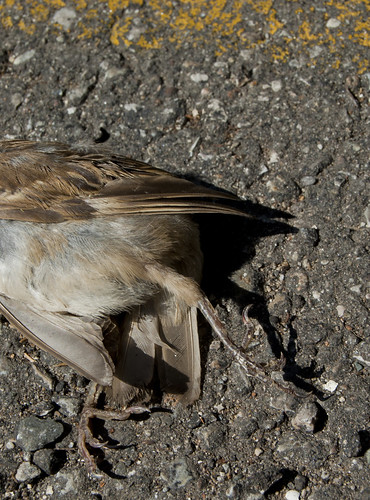
I moved it off the pavement and placed it at the base of a tree; checking back on it a day later, we discovered not only ants and flies had taken to the body, but a yellowjacket, as well. The next day, the sparrow was gone.
On a later day, while walking outside our apartment complex, Steph found a dead cicada on the sidewalk. Can insects be "useless creatures" too? Of course they can -- and this dead cicada, as it turns out, was full of ants.
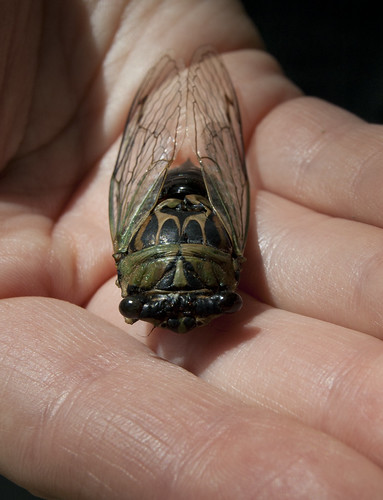
On a later day, while walking outside our apartment complex, Steph found a dead cicada on the sidewalk. Can insects be "useless creatures" too? Of course they can -- and this dead cicada, as it turns out, was full of ants.

Though I find dead insects fascinating, I'm not so sure I want to include them in this project. They are certainly photogenic, and are no doubt despised by many; however, I think that they would make a good, but separate, photographic series.
There are many places I want to explore, but because the vegetation (not to mention poison ivy) is so lush, I'll have to wait until the plants die back in a few months. Until then, I'll photograph what I can find, but subjects may be few and far-between.
There are many places I want to explore, but because the vegetation (not to mention poison ivy) is so lush, I'll have to wait until the plants die back in a few months. Until then, I'll photograph what I can find, but subjects may be few and far-between.

